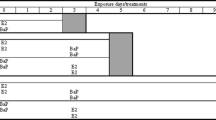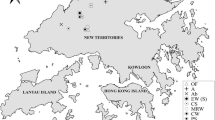Abstract
Induction of ethoxyresorufin-O-deethylase (EROD) activity and porphyrin accumulation shows different structure-activity relationships for different polychlorinated biphenyls (PCBs) and 2,3,7,8-tetrachlorodibenzo-pdioxin (TCDD). Interactions between the two responses can strongly influence the induction and activity of EROD. The results support the conclusion that there are non-additive interactions between nondioxin-like PCBs and dioxin-like compounds. The interaction between EROD activity and the porphyrin biosynthesis makes the prerequisite of additivity in the toxic equivalency factor concept for environmental mixtures highly spurious. Inhibition of EROD activity caused by nondioxin-like compounds could have a significant impact on the value of EROD activity as a biomarker in the present methods of risk assessment for these compounds.
Similar content being viewed by others
Rights and permissions
About this article
Cite this article
Tysklind, M., Bosveld, A.(.T.C., Andersson, P. et al. Inhibition of ethoxyresorufin-O-deethylase (EROD) activity in mixtures of 2,3,7,8-tetrachlorodibenzo-p-dioxin and polychlorinated biphenyls: EROD activity as biomarker in TCDD and PCB risk assessment. Environ. Sci. & Pollut. Res. 4, 188 (1997). https://doi.org/10.1007/BF02986341
Issue Date:
DOI: https://doi.org/10.1007/BF02986341




